The Planet Hunter
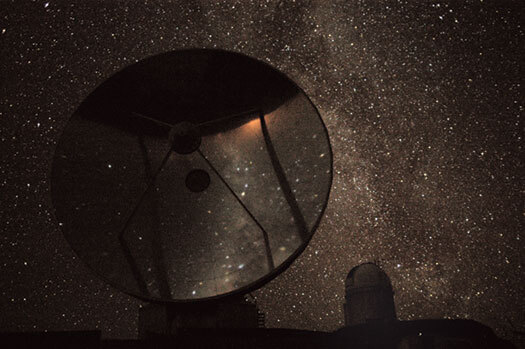
The Milky Way is shown above the La Silla Observatory in Chile’s Atacama desert. The vast expanse of stars and planets has always fascinated Maggie Turnbull, who turned her love for astronomy into a career as a freelance astrobiologist. Working out of her home office in Antigo, Wisconsin, she has become internationally known for her work cataloging potentially habitable planets. Nico Housman/European Southern Observatory
Is there intelligent life beyond Earth? Maggie Turnbull ’98 is determined to find out.
Maggie Turnbull ’98 sits in the fading afternoon light of her parents’ living room in Antigo, Wisconsin, her laptop perched on the table before her. This small town of 8,200 in the Northwoods, hours from the nearest university and a plane ride away from the closest major observatory, is an unusual home base for an astronomer and astrobiologist who has dedicated her career to advancing the search for extraterrestrial life.
But Turnbull is not your typical scientist.
“I really like working in places like this,” she says, gazing over the back yard’s towering trees and small pond, binoculars resting nearby, in case she wants a better glimpse of the woodpeckers dining on the peanut-butter-and-suet concoction she mixes up for them. “Sometimes I just need to stare out the window and think.”
But the life she’s thinking about is light years away from this back yard. Once labeled a genius by CNN, Turnbull is internationally known for her work cataloging potentially habitable planets and even has an asteroid named after her (7863 Turnbull). She’s not afraid to take risks to pursue her scientific dreams — first by choosing astronomy, then by focusing on the search for extraterrestrial life, then by leaving a good job at a highly respected institute to do science on her own terms. As a freelance astrobiologist, she focuses on life in the universe.
The life she has discovered along the way: her own.
As a kindergartner, Turnbull pored over her school’s encyclopedia of planets, its pages filled with big, vivid pictures of the solar system. “Saturn, in particular, was just so exotic and so captivating,” she recalls. “That’s sort of my earliest memory of becoming enchanted with space.”
She yearned to be an astronaut and was obsessed with Star Trek: The Next Generation. “I was religiously attentive to that show,” she says with a laugh. “Every Monday night at nine o’clock it would come on, and I would be in front of the TV, waiting. I think it probably crystallized in my mind that I was going to do something with space exploration.”
Although she didn’t grow up with a back-yard telescope — frankly, she was underwhelmed by the limited view — she found other ways to feed her fascination with space. In middle school, she devoured every book on the topic that she could find, including one of her father’s old college astronomy textbooks. “It was all words, no pictures, just a black cover. And I couldn’t tear myself away from it,” she says. “I’d come running into the kitchen and say, ‘Mom, did you know if you took even a spoonful from the center of the sun, it could go crashing through this table and to the center of the earth because of how heavy it would be?’ ” In seventh grade, Turnbull tore through Isaac Asimov’s Atom, about atoms and particle physics. “I remember wanting to talk about it in science class, and that wasn’t going anywhere,” she says with a laugh.
On her high school graduation day, a friend asked what she was going to do next.
“I’m going to do astrophysics,” Turnbull declared, putting her plan into words for the first time. She applied to only one college — UW-Madison — and she was on her way.
But once she settled into freshman year, her confidence crumbled. Of the forty-thousand-some students on campus at the time, she was one of just three astronomy majors in her year. “I had a moment where I thought, there’s just no way that’s going to work. Nobody here wants to be an astronomer,” she remembers. “And that’s because there aren’t any jobs. Where am I going to work?”
So she switched her major to biology, thinking it a more practical path. But she felt so sick over the decision that she barely slept for two weeks. One day, her astronomy TA showed a video that included the same pictures of Saturn, Jupiter, Uranus, and Neptune that Turnbull had first spotted in that encyclopedia as a child, and she broke down in tears as the images flashed on the screen.
“Are there any jobs at all in this field? Tell me there’s something I can do with my life!” she told the TA after class. They talked about research opportunities through NASA and the National Science Foundation, and, reassured, Turnbull switched her major back to astronomy.
Even then, she was intrigued by the idea of life on other planets, but knew it was considered “fringe.”
“It was an identity crisis. This is how I am, and yet this is how the world works, and the world doesn’t have a place for someone who wants to do something that’s that out there,” she says.
But if the world didn’t have a place yet, she decided, she’d make her own. She soon had her chance.
Turnbull spent a summer working at the Harvard Center for Astrophysics, and while she was there, the movie Contact hit theaters. In the film, Jodie Foster plays an astronomer who discovers the first sign of intelligent life from another planet.
“I sat down ready to pooh-pooh that movie. I was going to know all the things that were wrong and inaccurate,” Turnbull says. “But by the end, I was practically standing on my chair saying, ‘That is what I’m supposed to do with my life!’ ”
After graduation, she landed an astrobiology internship at NASA’s Ames Research Center in California. She then started graduate work in astronomy at the University of Arizona, where she was told that her UW research had set her application apart from some two hundred other applicants.
In grad school, she met Jill Tarter, then-director of the SETI (Search for Extraterrestrial Intelligence) Institute, which was searching for radio signals from extraterrestrial civilizations. Using radio telescopes to observe nearby sun-like stars, SETI researchers monitored millions of radio channels for evidence of communication transmissions from intelligent beings. Turnbull begged
Tarter for the chance to work for her, and Tarter was impressed by her enthusiasm.
“Maggie is a unique individual,” Tarter says. “She has a huge amount of energy, she’s pretty fearless, and she does things in her own way. When she was in graduate school in Arizona, there was no formal program in astrobiology, so she created her own graduate program.”
One day, while sitting in the SETI offices in Mountain View, California, Turnbull looked over and saw a photo of Tarter with Jodie Foster. “I had not realized that [Tarter] was the one the movie Contact was based on,” she says. “I went from sitting in a movie theater to sitting in the office of the real-world inspiration for that movie.”
While at SETI, Turnbull embarked on an effort to help the project’s re- searchers refine their search. She turned to the Hipparcos catalog, which lists the names, coordinates, color, and distance of about 120,000 nearby stars, and began piecing together shreds of information like a detective to better understand the stars scattered across the cosmos.
“You have to know how far away it is to know how luminous of a star it is. And if you don’t know how luminous it is, then you don’t know how massive it is, which means you don’t know how long it’s going to live or how old it is,” Turnbull explains. “The brightest stars only live for a million years. We need to know this when we’re building a target list for SETI, because you need a nice, stable environment for billions of years for life to take hold, especially for intelligent life if you’re listening for radio signals. On Earth, that took 4.5 billion years to happen.”
Turnbull’s task: rule out the stars that weren’t good candidates. At the same time, she vastly lengthened the target list through her analysis of other stars that SETI hadn’t yet considered.
“They had a few thousand stars that they were looking at, but now we could look at tens of thousands of stars that we knew were good, high-quality targets,” she says.
Her work became the Catalog of Potentially Habitable Stellar Systems, or HABCAT, as it’s better known. Then she added data from other catalogs, including information on stellar composition. To create planetary bodies and living organisms, you need a star rich in heavy metals — that rules out many of the older stars that lack heavy metal content. During Turnbull’s four years at SETI, her database grew, eventually encompassing more than 1 million stars.
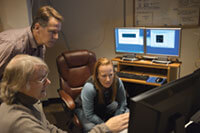
On a recent visit to Lowell Observatory in Flagstaff, Arizona, Turnbull consults with researcher Brian Skiff (sitting) and astronomer Gerard van Belle (standing). Photo: Andri Pol.
“I kept coming up with new questions to ask about the stars,” she says.
Turnbull’s contributions have been key to the search for planets outside our solar system, says Sara Seager, a professor of planetary science and physics at the Massachusetts Institute of Technology.
“She’s known as the person who knows the most about the list of target stars,” Seager says.
Not everyone gets Turnbull’s interest in extraterrestrial life. “I had really mixed reactions,” she says. “My parents were always very supportive. My parents are more imaginative people, pretty flexible thinkers. … I’m sure others thought, ‘The probability of detecting an alien signal is so small, and is that really a good use of your abilities and efforts?’ ”
Those are the same sorts of questions Jodie Foster’s character encounters in Contact. Turnbull loves how the main character’s discovery turns the world upside down, and that possibility, however remote, is her own motivation.
“To me, that is what would make science worth doing,” Turnbull says. “I realized there was nothing else in all of science or in all of astronomy that I could do that could potentially have that big of an impact on humanity. … Everything else pales in comparison. And why would you do something that pales?”
Still, Turnbull is quick to poke gentle fun at herself and Hollywood’s influence on her life.
“For whatever reason, I was sort of innocent and wide-eyed enough to take that idea very seriously, whereas most of my peers would’ve thought it was a fun idea, but extremely far-fetched, and gone on to do more realistic things. That’s what most people would’ve done and have done. I know a lot of people who have seen the movie Contact and their lives weren’t changed,” she says with a smile.
After earning her doctorate, Turnbull did an astrobiology postdoc at the Carnegie Institution for Science in Washington, D.C. Then she was hired as an assistant astronomer at Baltimore’s Space Telescope Science Institute, which manages the Hubble Space Telescope. She helped support the Hubble’s last servicing mission and found the work interesting.
And yet, she started to have doubts again. “After a while, I began to feel like I didn’t really belong at a big institute,” she says. “I felt like it wasn’t quite the environment that I could see myself in long term, which caused yet another identity crisis. I went through all of that, and I actually got a job, and it was a good job, and I didn’t want it. I had to come up with an idea of what the alternative would be, because there was no other institute in the world I’d rather be at — that place is doing amazing things.”
At the same time, she was homesick for family, for the simple pleasures of her childhood in northern Wisconsin. “I realized that I wanted a much bigger life than just astronomy,” she says. “As amazing and fantastic as astronomy and astrobiology are, academic research does not encompass enough of the human experience for me to feel like I’m living a happy and well-rounded life. I just felt the need for a major course correction.”
She resigned after just six months and decided to invent a new life as a freelance astrobiologist at her own nonprofit organization, the Global Science Institute. The same day she decided to resign, the phone rang. It was Webster Cash, a professor from the Department of Astrophysical and Biological Sciences at the University of Colorado at Boulder, and he wanted to know if she would lead a science team for the New Worlds Observer, a proposed mission to detect Earth-like planets around nearby stars. Her new adventure had begun.
The New Worlds Observer is just a concept for now, centered on the idea of a space telescope that would travel with something called a starshade. The unique design of the petal-shaped starshade is engineered to block powerful starlight so that a telescope can capture images of fainter objects nearby. “It’s a really cool design for an observatory, and it has a lot of advantages over trying to block the starlight once it’s already in the telescope, which is the way that it works now,” Turnbull explains.
“The Hubble has an internal coronagraph to block out the light of really bright stars so that it can see the things around them,” she says. But it can’t see something as small as an Earth-like planet, “and certainly not a habitable planet, because habitable planets are very close to the star. So it would have to be a new telescope with really good optics and a really good starshade.”
NASA recently selected the starshade concept as a possible use for a Hubble-class spy satellite that it acquired from the National Reconnaissance Office, but the project is now on hold indefinitely due to lack of funding. “It’s a matter of waiting for NASA to decide, are we going to have a dedicated mission to do something like this or not?” Turnbull says. “And funding is getting tighter and tighter by the minute.”
In the meantime, Turnbull continues to submit grant proposals to fund her work, competing with scientists who have the clout of large universities and institutes behind them.
“It probably doesn’t help me that I’m at a tiny, one-woman nonprofit organization, but I don’t think that it’s made my life impossible either,” says Turnbull, who currently has funding from NASA and the NASA Astrobiology Institute.
Colleagues aren’t surprised that Turnbull succeeds on her own. “She does really creative and interesting things all the time,” Cash says. “You would think that all scientists are bubbling with creative ideas, but Maggie’s level of creativity is quite rare. It’s a talent she was born with, and she’s figured out how to use it in her own way.”
And she pours that energy into her ongoing study of the stars that she believes are the best targets for habitable planets.
“I would just like to understand our nearest neighbors a lot better,” Turnbull says. “Is there a place relatively nearby in the neighborhood of the sun that is anything like Earth at all? Maybe there aren’t people walking around, but maybe there are. What if there are animals? Even if there was a planet that didn’t have life on it, but that could become habitable, what would that even look like? … We could find anything out there.”
Now she’s working with colleagues at the University of Arizona to collect data on the stellar ages of top targets by studying their rotation rates and activity levels. She occasionally joins them for a dusk-to-dawn observing run at the Lowell Observatory in Flagstaff, Arizona. It’s a totally different energy from her usual work environment.
“To be around that many astronomers puts you in a certain frame of mind that is hard to replicate when you’re by yourself in the woods,” she admits.
At the same time, Turnbull feels more connected to the real world in Antigo. Soon after moving back, she threw herself into community life, spearheading the drive for Antigo’s first farmers’ market and winning a spot on the Common Council. She teaches at the local technical college and is active in the Antigo Bow Club. A former vegetarian turned hunter, she’s proud of recently bringing down her first doe.
“In the real world, people are fighting for their survival,” she says of life in Antigo. “It’s not just academics complaining that Washington isn’t putting enough money into science. People are trying to actually stay alive and just be able to afford a roof over their heads.”
Seager, the professor at MIT, admires Turnbull’s attitude.
“Her unconventional approach to life is very refreshing,” Seager says. “She wanted to be a scientist, but only on her own terms.”
At the 100 Year Starship symposium, an event sponsored by the Defense Advanced Research Projects Agency and focused on interstellar space exploration, Turnbull stood up and made her pitch for better instruments. Despite continued cuts to NASA’s budget, she sees that as the only way to make progress. “If you can give me a space telescope that is capable of finding Earth-like planets around nearby stars, then the [funding] problems are all solved. I can tell you where the habitable zones are, and private industry will take over,” she says. “Once the discovery has been made and you have destinations, then you will have desire. People will just have an unquenchable desire to go there. And when you have desire, you have success. You find a way to do it, with or without government funding.”
And what then? “Then we can take over the galaxy, and we can meet all the other civilizations that are out there,” she says with a laugh.
For now, she’s content to keep searching from her small corner of the universe.
Nicole Sweeney Etter, a freelance writer and editor, lives in Milwaukee.
Published in the Summer 2013 issue

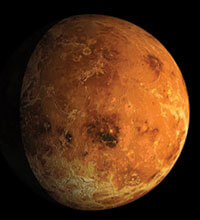
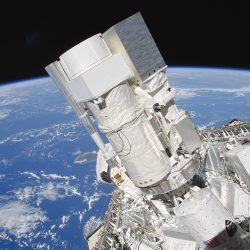
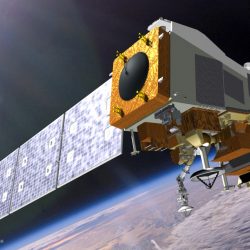
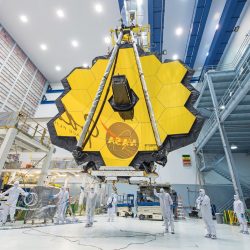
Comments
dan sweeney June 18, 2013
interesting story, University of Wisconsin should be very proud of Maggie Turnbull. well written.
Artem June 25, 2013
Living the dream! Way to go!
Great to hear about alumni that had a dream, stuck to it and are accomplishing great things. Huge motivator 🙂
Tori June 27, 2013
I have such respect for people who entered the field of Astronomy before it had the level of support and funding that it does today (though it still deserves more of each). Congratulations to Maggie for an amazing career, with much more to come.